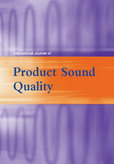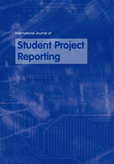Explore our journals
Browse journals by subject
Research picks
- Green child o' mine
Research in the Global Business and Economics Review suggests that we could and should be encouraging green shoots to grow in preschool-aged children regarding environmental matters.
The influence of the media on the public understanding of environmental issues reaches far beyond headlines and news reports. Online content, interactive apps, television, and even print outlets are shaping what people know and think about the environment and perhaps more importantly are shaping their behaviour. Environmental awareness, in this context, is not merely familiarity with the facts but shows the connections between knowledge, social norms and personal action. But, little attention has been paid in research to children and one particularly overlooked demographic group, the preschooler, whereas growing greener children should be part of our plan for a sustainable future.
Many preschoolers are exposed to a lot of media content at home, in their nursery schools, in the shopping malls, and beyond. The evidence suggests that we might design media experiences, such as educational television programs, interactive online activities, and even game-based or theatrical content that could be used to cultivate their environmental consciousness from an early age.
We could encourage children to adopt environmentally friendly habits, from conserving water and energy at home to growing into influencing youngsters that change the social norms within their communities. Early exposure is key. Attitudes and behaviour are formed in childhood and generally persist into school age and then into adulthood. If we can encourage interest and engagement early, then our preschoolers might grow up to be lifelong adherents to sustainable practices.
However, studies indicate that simply presenting information is insufficient to foster meaningful engagement. Individuals must grasp both the causes of environmental problems and the range of practical solutions available. Without this context, knowledge rarely translates into action. Media that frames environmental challenges with clarity, providing narrative and visual cues alongside actionable guidance, has the potential to move audiences from passive awareness to active participation. This applies just the same to those preschoolers, although, of course, the detail and depth of that information must be carefully crafted for the audience to have any impact at all.
Children who develop environmental awareness early, often affect wider change as they grow up, influencing their families, their friends, and into the educational setting as they mature and ultimately the workplace.
Petkou, D., Tsiouni, M. and Vitoulis, M. (2025) 'Formation of environmental consciousness in pre-school children through the media: a typology of influence axes', Global Business and Economics Review, Vol. 33, Nos. 3/4, pp.282–298.
DOI: 10.1504/GBER.2025.148305 - Rise and fall of the cyberdeviants
A new study of college students in India has shown that while internet access has become central to academic life, it has also opened the door to troubling forms of unethical or illegal behaviour online, ranging from harassment and hacking to the misuse of institutional networks. The umbrella neologism for this behaviour is cyberdeviance. The results of a survey of some 264 students are discussed in the International Journal of Public Sector Performance Management.
Cyberdeviance, a term used to describe online misconduct, has grown increasingly relevant as higher education embraces digital learning and communication. This study highlights how social and economic pressures are shaping young people's conduct online, and raises questions about how universities might balance openness with accountability in the digital age.
The study also shows that while most students use campus internet connections for legitimate purposes such as coursework, research, and communication, a notable proportion admitted to activities that cross ethical or legal boundaries. Gaming was identified as the most common non-academic use of institutional networks, while hacking, information theft, and online harassment were reported less frequently.
The findings do suggest that most of the cyberdeviance is not malicious, but reflects broader personal anxieties, such as a fear of unemployment and financial insecurity once one's education is complete. They also point to some students having the desire to apply their technical knowledge in ways that feel practical, albeit ethically ambiguous. The researchers argue that such motivations reveal blurred lines among a generation attempt to negotiate both digital empowerment and economic uncertainty at the same time.
The researchers point out that few institutions have developed ways to guide their students' conduct online. As social media, gaming platforms, and data-intensive tools continue to proliferate across campuses, they face mounting difficulties in regulating their use without stifling innovation or academic freedom. But, there remains an urgent need for policy reform to allow a balance to be achieved.
Embedding digital ethics into the university curriculum, strengthening access controls, and cultivating digitally mature learning communities where technical proficiency is matched by moral awareness could allow higher education move ahead without being pulled down by cyberdeviance.
Arumugam, S.K., Ramesh, S. and Anuradha, B. (2025) 'Cyberdeviance among students – a multidimensional scaling approach', Int. J. Public Sector Performance Management, Vol. 16, No. 3, pp.286–307.
DOI: 10.1504/IJPSPM.2025.148527 - Avoiding attrition among India's female IT millennials
A study of the information and technology sector in Kolkata, India, suggests that what keeps female millennial employees motivated and engaged at work has less to do with pay and more to do with how they are treated. Drawing on data from more than five hundred women employed across five major IT firms, the research finds that psychological safety and well-being, rather than salary, are the most powerful determinants of motivation and commitment. The term millennial refers to people born any time from the early 1980s to the mid-1990s.
The research, published in the International Journal of Management Practice, uses self-determination theory to investigate what motivates individuals when three fundamental needs are met. These needs are autonomy (a sense of control over one's work), competence (feeling capable and effective), and connection (belonging and supportive relationships). The research shows that these needs were best fulfilled not by financial incentives but through work environments that promoted trust, inclusion, and personal growth.
Psychological safety, defined as the assurance that one can express ideas, take risks, or admit mistakes without fear of ridicule or punishment, emerged as the single most influential factor driving motivation among respondents. Women who felt able to voice their opinions freely reported significantly higher engagement levels. The study also highlights the critical role of mental and physical health. Workplaces that were attentive to these matters had stronger commitment from employees and ultimately lower staff turnover.
The research also considered leadership style and job design. These factors also shaped outcomes. Female employees who enjoyed autonomy in structuring their tasks, and who had empathetic or transformational managers, showed markedly greater job satisfaction. The research suggests that such leadership fosters a sense of belonging and encourages innovation, particularly important in the fast-evolving world of IT.
These findings challenge the assumption that pay is the prime mover for women in IT here. Instead, emotional and relational factors weigh more heavily. As such, the implementation of flexible work structures, psychological safety, and well-being considerations might help reverse the attrition experienced by the sector in recent years.
Pahari, S., Pahari, M.P., Behera, C. and Polisetty, A. (2025) 'Boosting engagement: the motivational drivers of female millennials in Kolkata's IT hub', Int. J. Management Practice, Vol. 18, No. 5, pp.445–470.
DOI: 10.1504/IJMP.2025.148345 - Lessons in love for leaders
Online dating apps may have something to teach corporate leaders about responsible digital leadership, according to research published in the Global Business and Economics Review. The authors argue that the same kinds of tools millions use to find romance could be adapted as powerful platforms for networking, recruitment, and collaboration. The research connects two unlikely worlds: the ethics of leadership and the psychology of online dating.
The study focuses on what it terms responsible leadership: a model of decision-making that balances financial success with social good. This form of leadership considers the interests of all stakeholders, users, employees, and society at large, rather than homing in on the fiscal bottom-line. It operates across five key dimensions: general, economic, social, political, and environmental. The goal is to cultivate trust and a sense of shared purpose while managing the growing influence of technology in everyday relationships.
The research situates this discussion within the global dating industry, a market worth billions of dollars each year and serving hundreds of millions of users worldwide. These platforms now occupy a central role in the social life of many people. Once seen purely as venues for romantic connection, they have evolved into multifunctional spaces where people form friendships, exchange ideas, and even discuss work. This expansion has introduced new ethical challenges, such as privacy risks, emotional manipulation, and the uncertainty that comes with meeting strangers in virtual settings.
The study asks how leadership might manage this kind of uncertainty while encouraging authenticity. In digital spaces, people interact through carefully constructed profiles and selective disclosures. Without the cues of face-to-face communication, users must interpret limited information and make judgements about trust and sincerity. Responsible leadership, the researchers argue, involves designing systems that make these interactions safer and more transparent, while preserving the users' freedom to experiment and express themselves.
Interviews with 250 dating app users reveal that many people adapt their online selves, sometimes exaggerating or reimagining aspects of their identity. Rather than treating this behaviour purely as deception, the study interprets it as a form of imaginative self-representation, a way of exploring alternative versions of the self. Digital life, in this sense, becomes a space where creativity plays a role in how people learn to relate to one another.
This interpretation carries implications beyond dating. As remote work and online collaboration become increasingly common, the same platforms once used for romantic encounters are now being used to network, recruit, and share expertise. The boundary between personal and professional life is becoming less distinct, raising questions about how to maintain privacy, trust, and ethical conduct in these hybrid environments.
The study proposes that leaders of digital platforms must develop strategic intelligence, which is a combination of analytical ability, foresight, and empathy. This approach recognises that online interaction always involves some degree of uncertainty, if not a world of pure imagination, but that uncertainty can be productive. It can foster innovation, openness, and understanding, if handled with care.
Schinzel, U. (2025) 'Online dating platforms – and their link to responsible leadership and uncertainty avoidance – the key impact of imagination', Global Business and Economics Review, Vol. 33, Nos. 3/4, pp.321-338.
DOI: 10.1504/GBER.2025.148314 - Ready for it?
Preparedness, rather than technology, is what will drive success in digital transformation, according to research in the International Journal of Business and Globalisation. The study surveyed 200 professionals involved in digital change initiatives and found that that technological progress delivers value only when people are ready and able to work with it.
Digital transformation is defined as the integration of information and communication technologies (ICT) across all areas of business. It has become a strategic imperative for organisations seeking to remain competitive. Yet, this research makes clear that the human factor, personal readiness and capability need to develop alongside the technological innovations for the transformation to be complete. The researchers identify three key factors shaping this process: digital leadership, organisational culture, and technology readiness.
Technology readiness can refer not only to the psychological and practical preparedness of individuals or organisations to adopt and use new technologies but encompasses technical competence and confidence. The motivation and openness to change must also be present.
The research also points out that technology readiness is pivotal in leadership, culture, and employee growth. Among these three factors, organisational culture emerges as the most powerful driver of readiness. Where the workplace encourages experimentation, collaboration, and innovation, employees are far more likely to engage positively with technological change. A culture that tolerates some degree of failure, rewards curiosity, and values can underpin adaptability across a company.
The researchers emphasise that workers who feel equipped and confident to use technology are more adept at problem-solving, more adaptable to new challenges, and more capable of continuous learning. These can be seen as the very traits that define resilience in the digital economy. The team also points out that their findings might equally be applicable across society. As national economies become more dependent on digital infrastructure, workforce readiness emerges as a societal issue, the findings suggest. Policymakers and educators might look to these findings for insight into how training programmes might be tailored to strengthen competitiveness at scale.
Basalamah, M.S.A. and Basalamah, J. (2025) 'The role of organisational culture and digital leadership in enhancing employee development skills during digital transformation: mediating role of technology readiness', Int. J. Business and Globalisation, Vol. 41, No. 5, pp.1–17.
DOI: 10.1504/IJBG.2025.149031 - Privacy on parade
It is often asked facetiously that if one has nothing to hide, then why worry about privacy. A sharp retort might be to ask whether such people would be content to have no blind at the bathroom window. We all reserve the right to privacy in our lives. At a time when books are once again being blacklisted, banned, and burned, minority voices gagged, and conflicts multiply around the world with righteous certainties on all sides, the question of privacy is once again high on the agenda.
Against this backdrop, the Tor Browser brings new complexities to the debate and to the field of digital forensics. Tor, short for "The Onion Router" is a web browser designed specifically to anonymise a user's internet activity. It essentially routes traffic through a layered network of encrypted relays. It can be coupled with a virtual private network (VPN), but even without it, Tor can conceal a user's internet protocol (IP) address, their whereabouts, and the trail of sites they have visited.
The Tor Browser makes it almost impossible for conventional tracking tools to link online actions to a specific individual. This makes it an important tool for those people who are being banned, gagged, and censored. It can be a critical part of working for journalists reporting under authoritarian regimes, political dissidents, whistleblowers, and vulnerable groups. It allows users to reduce the risk of surveillance, persecution, and retaliation.
Unfortunately, as with every tool since the dawn of humanity from the hand axe onwards, it can be used for illicit purposes. As such, cybercriminals have embraced Tor. It allows access to the so-called dark web, an unindexed part of the internet that hosts both lawful and unlawful content. As such, investigators attempting to trace illegal activity on the dark web now face a technological stalemate. Traditional forensic tools, designed with everyday web browsers in mind, are wholly ineffective when faced with the Tor Browser's obfuscating characteristics.
Research in the International Journal of Electronic Security and Digital Forensics, introduces "DarkExtract", an open-source forensic tool aimed at bridging the gap between the needs of security and the demands of accountability.
DarkExtract can find host-based artefacts, fragments of data left behind on a user's device even after a purportedly anonymous browsing session ends. Such data fragments, found in computer memory, virtual caches, and even the operating system's files, could offer useful leads, providing sufficient evidence to reconstruct user activity and support a broader criminal investigation.
Of course, the success of a tool for countering other tools that protect a person's privacy are important in addressing criminality. But, given the existence of rogue regimes and bad actors, they also raise the issue of that bathroom blind and the privacy of innocent users hoping to hide their decency, as it were.
Mandela, N., Mahmoud, A.A.S., Agrawal, A.K. and Mistry, N.R. (2025) 'DarkExtract: tool for extracting and analysing Tor Browser host-based activities', Int. J. Electronic Security and Digital Forensics, Vol. 17, No. 5, pp.563–581.
DOI: 10.1504/IJESDF.2025.148210 - We need to talk about pharma
Chatbots based on so-called artificial intelligence (AI) are being used increasingly to handle interactions between customers and companies online. In Shanghai's fast-growing e-commerce pharmacy sector, they are, according to research in the International Journal of Business Innovation and Research, almost essential to addressing long-standing customer service issues.
As residents of China's most populous city turn to digital platforms for their healthcare needs, chatbots are being used to provide clarity, efficiency, and personalisation in an area where trust and information are critical.
The study involved surveying 400 Shanghai-based internet users with experience using pharmacy chatbots. The results of the survey offer an empirical analysis of how this technology affects customer satisfaction in the online pharmaceutical context. The researchers found that chatbots significantly improved the user experience by delivering real-time, tailored support. In particular, chatbots were able to improve customer service engagement to the point where customers felt that their needs were understood and met. This factor, the study shows, is an important mediator between the use of such tools and increased customer satisfaction.
For online pharmacies, health and medication safety are critical. The new, evolving technology can offer responsive and trustworthy communication where a direct human interaction is not possible. With urban populations facing overburdened healthcare systems and limited access to in-person consultations, online pharmacies are filling the gap and the integration of chatbots into their systems offers a scalable solution to the pressures.
Chatbots can provide 24/7 service, recommend medications based on purchase history, and flag potentially unsafe drug combinations. These features are particularly valuable in a city like Shanghai, where population density and time constraints often limit access to conventional pharmacy services. However, the researchers caution that implementation must be accompanied by careful design. Transparency in how chatbots handle user data, the limits on their advisory roles, and mechanisms for customer feedback are all essential to maintain user trust.
Jing, Z. and Wongkumchai, T. (2025) 'The role of AI-powered chatbots on improving customer experience in e-commerce: a case study of pharmaceutical organisations in Shanghai', Int. J. Business Innovation and Research, Vol. 38, No. 5, pp.23–48.
DOI: 10.1504/IJBIR.2025.148940 - Hello, is it malware you're looking for?
Research in the International Journal of Electronic Security and Digital Forensics has looked at the evolving landscape of cybersecurity and highlights the five biggest threats. The work reveals just how vulnerable different sectors and technologies are and how there is an urgent need to develop for more sophisticated tools to defend against these threats.
Cybersecurity, broadly defined, is the practice of protecting computer systems, networks, and data from malicious attacks. These attacks, ranging from simple phishing scams to coordinated botnet, ransomware operations, are no longer isolated events. They have become a daily concern for businesses, governments, and individuals alike. The consequences of such breaches can be severe: loss of sensitive data, operational paralysis, reputational damage, and in some recent high-profile cases, financial collapse.
Cybersecurity offers tools such as firewalls to act as gatekeepers between secure and untrusted systems, encryption, which scrambles data into unreadable formats to prevent unauthorized access, and anti-virus and anti-malware software to protect computers and files from unauthorized access.
However, the effectiveness of cybersecurity often depends as much on human behaviour as technological resilience. Many attacks exploit what security professionals call the human factor, gullibility, ignorance, or simple oversight. A well-crafted phishing email can trick an employee into divulging passwords or downloading malware, bypassing even the most advanced cybersecurity system.
The range of cyber threats continues to expand. Ransomware, in which attackers encrypt a user's data and demand payment to unlock it, has grown increasingly common. Companies, individuals, local government, and hospitals have been affected. The damage can be swift and total, bringing operations to a halt.
Another major concern lies in the proliferation of Internet of Things (IoT) devices, everything from smart thermostats to wearable fitness trackers. Hackers can exploit security loopholes in such devices to steal data or co-opt the devices into larger networks, botnets, used to launch massive cyberattacks.
Cloud computing has also introduced new vulnerabilities. As more organisations shift data storage and processing to remote servers, misconfigured settings, poor access controls, and lapses in encryption have opened backdoors for attackers.
Cybersecurity experts advocate a multilayered approach. Advanced firewalls, stronger user authentication, constant monitoring, and regular audits are now considered standard. For IoT, manufacturers and users alike must implement strict access policies and use end-to-end encryption. In cloud systems, anomaly detection software can flag suspicious behaviour early.
More importantly though, experts stress the need for cultural and institutional change. Cybersecurity is not wholly a technical challenge, it is a societal one. Defence against cyber threats requires cooperation between private companies, governments, and international institutions. Legal frameworks must evolve with the technology. Artificial intelligence is already being deployed to detect threats in real time, and training programmes are helping users spot fraudulent messages before they click. But, the criminals are also using AI to exploit the loopholes and open the backdoors.
Nevertheless, the message is clear: digital infrastructure underpins modern life from commerce to healthcare, cybersecurity can no longer be treated as an afterthought, it must be in the vanguard.
Ibrar, M., Khan, M.F., Yu, J., Li, H., Zhang, W., Yin, S., Karim, S. and Khan, K. (2025) 'The shifting landscape: a comprehensive examination of the top five emerging cybersecurity threats', Int. J. Electronic Security and Digital Forensics, Vol. 17, No. 5, pp.593–603.
DOI: 10.1504/IJESDF.2025.148290 - Motivating remote teachers
Research in the International Journal of Productivity and Quality Management has examined the educational challenges faced by Indonesia's remote regions through a systematic review of the literature. The findings highlight how psychological factors, motivation and emotional intelligence, specifically, can improve teacher competence. The work focused on the Tojo Una-Una district of Central Sulawesi and shows how teacher development strategies might be more effectively tailored for geographically and socially isolated areas such as this.
In remote regions, the barriers to quality education are multifaceted. Teachers frequently have to contend with inadequate access to teaching materials, minimal opportunities for professional development, and a degree of professional and social isolation that is not commonly encountered in urban settings. Such challenges not only affect the performance but have a direct impact on what their students can achieve and so the broader development of the community.
In this context, the team has homed in on work motivation and emotional intelligence. Work motivation is defined as one's drive to strive for excellence in a professional role. Motivated teachers tend to be more committed, proactive, and resilient in addressing challenges and adversity. Emotional intelligence refers to one's capacity to recognise, understand, and manage one's emotions and those of others. In the classroom, this translates into teachers who can handle stress more effectively, maintain positive relationships with students and colleagues, and foster a more supportive and empathetic learning environment.
Earlier studies have focused tended to focus on urban education, by turning to remote education and resource-poor settings, this work has linked work motivation and emotional intelligence in remote areas. Moreover, it has found that these two traits reinforce each other and so encouraging the development of each might improving teaching quality in a synergistic way, which could have implications for education policy in remote areas.
Idris, I., Bahasoan, A.N. and Wahdaniah, W. (2025) 'How does work motivation and emotional intelligence affect teacher competence in remote areas? A systematic review of the literature', Int. J. Productivity and Quality Management, Vol. 46, No. 5, pp.1–44.
DOI: 10.1504/IJPQM.2025.148928 - The pot calling the kettle green
In the heart of Vietnam's Red River Delta, the village of Bat Trang has been renowned for centuries for its distinctive ceramics. But, it has a modern problem – environmental caused by degradation driven by outdated, high-emission production methods. However, a study in the International Journal of Business Innovation and Research has found that this traditional craft hub is beginning to reshape its future through green process innovation. It is adopting cleaner technologies and practices that not only reduce pollution, but also improve economic and social outcomes.
The research, based on interviews with ten local business owners in Bat Trang, examines how and why producers are shifting towards sustainable practices. It comes at a time when Vietnam is confronting the environmental consequences of rapid industrialisation and seeking a path toward a green economy.
The research shows how many producers have abandoned traditional coal-fired kilns in favour of cleaner energy sources such as liquefied petroleum gas and electricity. These substitutions have led to a marked reduction in greenhouse gas emissions and waste. However, the benefits are not solely environmental. The research finds that the transition has also brought measurable gains in efficiency, product quality, and worker health. Together, these improvements align with what sustainability experts refer to as the triple bottom line; a framework that evaluates performance in terms of environmental, economic, and social outcomes.
Interviewees cited growing market demand for environmentally responsible products, regulatory pressures, technological advancements, and increasing awareness of ethical production standards. Social and cultural expectations are shifting, too, with the younger generation expressing being more committed to sustainability.
There are implications for policymakers. The transformation of Bat Trang suggests a new model for traditional industries that might be modernised without erasing their cultural identity. There is now a need for targeted support, financial incentives, better infrastructure, and improved access to renewable energy technologies to take this traditional industry forward.
Nguyen, T.Q., Nguyen, H.T. and Hoang, T.T. (2025) 'Green process innovation and sustainable performance: an exploratory study in Bat Trang ceramic craft village', Int. J. Business Innovation and Research, Vol. 38, No. 5, pp.1–22.
DOI: 10.1504/IJBIR.2025.148938
News
Prof. Andrew W.H. Ip appointed as new Editor in Chief of International Journal of Grid and Utility Computing
Prof. Andrew W.H. Ip from Hong Kong Polytechnic University has been appointed to take over editorship of the International Journal of Grid and Utility Computing.
Inviting applications for board membership with the International Journal of Business Governance and Ethics
Prof. Nicola Cucari, Editor in Chief of the International Journal of Business Governance and Ethics, is currently seeking new members to join IJBGE's Editorial Board, as well as Associate or Regional Editors. These voluntary roles offer a unique opportunity to contribute to advancing high-quality research in governance, ethics, transparency, accountability and responsibility in business and society.
If you are interested, please complete this short online form:
Apply here
Prof. Cucari welcomes you to share this invitation within your professional network, and thanks you for your time and consideration. He looks forward to receiving applications and your support in strengthening IJBGE's global academic community.
Prof. Taosheng Wang appointed as new Editor in Chief of World Review of Science, Technology and Sustainable Development
Prof. Taosheng Wang from Hunan International Economics University in China has been appointed to take over editorship of the World Review of Science, Technology and Sustainable Development.
Prof. Fu-Sheng Tsai appointed as new Editor in Chief of International Journal of Food Safety, Nutrition and Public Health
Prof. Fu-Sheng Tsai from the City University of Macau in Macao has been appointed to take over editorship of the International Journal of Food Safety, Nutrition and Public Health.
Associate Prof. Nicola Cucari appointed as new Editor in Chief of International Journal of Business Governance and Ethics
Associate Prof. Nicola Cucari from Sapienza University of Rome in Italy has been appointed to take over editorship of the International Journal of Business Governance and Ethics.
IJBGE's former Editor in Chief, Dr. Stuart Farquhar, will remain on the journal's board. Inderscience's Editorial Office thanks Dr. Farquhar for his leadership, editorial insight and commitment, all of which have played integral roles in shaping IJBGE and enabling its success.




